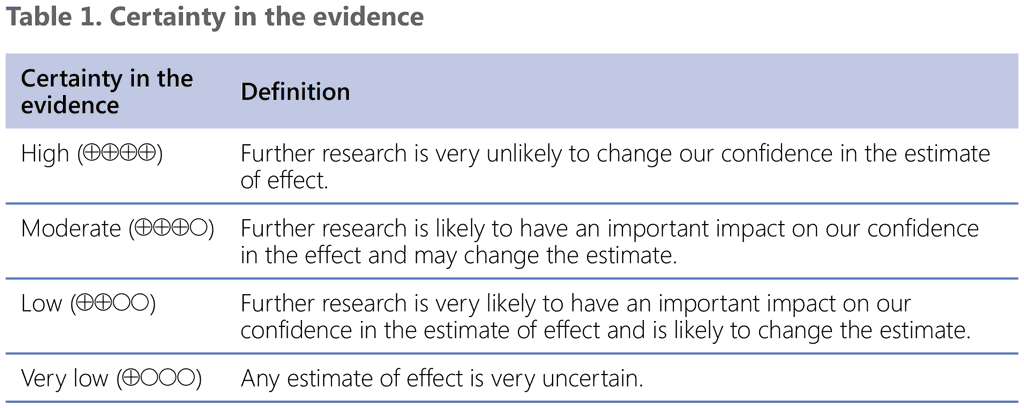Liens transversaux de livre pour Certainty of evidence and strength of recommendations
The recommendations in these guidelines qualify both their strength and in the certainty of the evidence on which they are based. The certainty of the evidence is categorized into four levels (Table 1). The criteria used by the evidence reviewers to qualify the certainty of evidence are summarized in the GRADE tables (see Web Annex 4). Several factors may increase or decrease the certainty of evidence (see tables 12.2b and 12.2c in the WHO handbook for guideline development [6]. The highest certainty rating is usually assigned to evidence from randomized controlled trials, while evidence from observational studies is usually assigned a low or very low certainty value at the start.
A recommendation may be strong or conditional. Apart from the certainty of evidence, the strength of a recommendation is determined by the balance between desirable and undesirable effects, values and preferences, and costs or resource allocation. For strong recommendations, the GDG is confident that the desirable effects of adherence to the recommendation outweigh the undesirable effects. For conditional recommendations, the GDG considers that the desirable effects probably outweigh the undesirable effects. The strength of a recommendation has different implications for the individuals affected by these guidelines (Table 2).

The text of the recommendation itself should be read along with the accompanying remarks which summarize: 1) the evidence on which the recommendation was made; 2) the anticipated desirable and undesirable effects of the interventions in assessing the balance of expected benefits to risks; and 3) other considerations which are important to the implementation of the policy.
 Retour
Retour